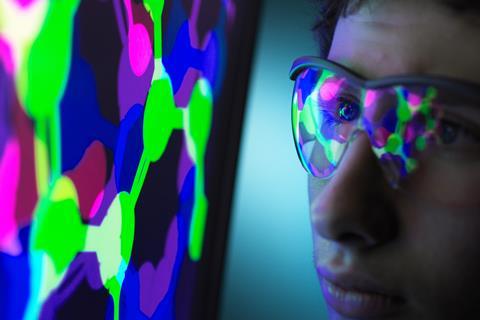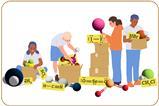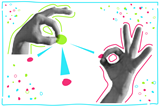And how you can use this approach in your classroom
Teachers like to make use of computing technology to help students get a solid understanding of some of the more complex concepts in chemistry, such as being able to visualise sub-microscopic interactions to understand particle motion and behaviour. To better understand which approaches work best, a study by Sweeder and his team looked at the differences in student engagement between a group of students who actively used a simulation and a group of students who passively watched a screencast (animation) to learn about chemical kinetics.

Previous studies have suggested both screencasts and simulations improve students’ mental models, with the benefit that simulations allow students to adjust variables and see changes for themselves. However, it has also been suggested that a simulation increases cognitive load and may compromise learning. With this in mind, the researchers created a screencast in which an expert gave a running commentary while using the simulation and directed students’ attention to the most important parts. At the start of the study each of the 600 students took a test, then completed a homework task linked to either the simulation or the screencast. After completing the homework and a final test, normal classwork built on the knowledge developed during the activity.
Both approaches improved student performance, but the students who viewed the screencast improved slightly more than those who used the simulation. Students with the lowest initial test scores improved the most, which suggests that this intervention makes the class average score more consistent.
To understand the differences between how students interact with simulations and screencasts, an eye-tracking study was carried out with 27 students. All the students spent about 60% of their time looking at the screencast or simulation and about 40% looking at the associated assignment, but students who watched the screencast spent considerably longer on the task. Also, the students that used the simulation significantly overestimated the amount of time they spent completing the task, whereas the students who watched the screencast slightly underestimated their working time. This difference may be a result of the increased mental effort required to work with the simulation, which makes students feel like they are spending more time on it.
Overall, this work shows that students are spending a significant amount of time focusing on particulate representations during the activities, which supports their conceptual understanding and allows them to answer questions without relying on prior knowledge. The slightly better performance by screencast students may be a result of the reduced cognitive load associated with this approach.
Teaching tips
The study activities were based on the Reactions and rates simulation from the PhET Interactive Simulations project at the University of Colorado Boulder, US, although there are other simulations by PhET and others available that cover a broad range of topics. The examples here are aimed at teachers who want to design activities that use simulations and/or screencasts with students. The questions that the students from the study were asked could be adapted for use in the classroom. A number of insights to support the effective design of teaching activities based around animations and simulations were given in the study.
- If you don’t have access to screencast facilities, you can present a live demonstration of a simulation with a running commentary. Then students should try it for themselves so that they can explore and be actively engaged.
- It is important to evaluate the impact on students’ learning either by verbal questioning or by using the kind of quiz included in the study. This reflective process allows the iterative improvements to enhance teaching and learning.
- The commentary should highlight key observations, without providing additional explanation of fundamental chemistry ideas. This helps students to scaffold their knowledge.
As the teacher you have an important role to play to ensure that simulations are used successfully and that students benefit from them.
References
R D Sweeder, D G Herrington, J R VandenPlas, Chem. Educ. Res. Pract., 2019, 20, DOI: 10.1039/c9rp00008a














1 Reader's comment